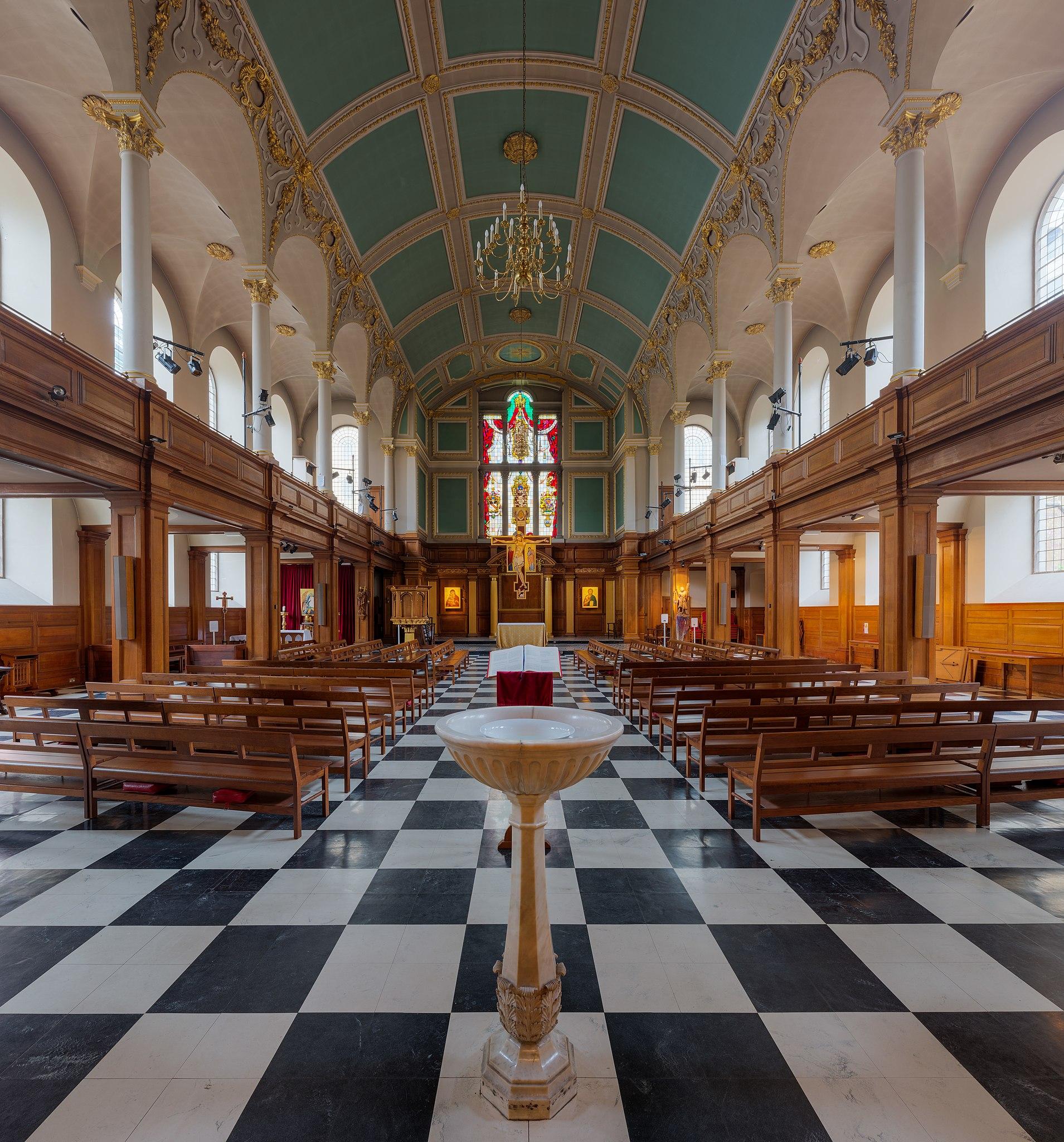St Etheldreda
Holborn, Greater London
St Etheldreda’s is the oldest Catholic church in England and one of only two remaining buildings in London from the reign of Edward I.

A site of worship for at least 1000 years, but when the crypt was excavated Roman remains were found so the site could have been in use for much longer still.
Holborn, Greater London
The first mention of St Andrew Holborn comes in 959 AD, during the reign of King Edgar. A charter of Westminster Abbey alludes to an 'old wooden church' on the hill above the river Fleet.
Little is known of the building’s early history. However, it is clear that by the end of the 13th century the original wood had been replaced with stone. In 1348, the church gained four nearby houses bequeathed by John Thavie, a renowned armourer for Edward III.
Over the years, St Andrew’s has had associations with several famous figures. An early example is Henry Wriosthesley, Earl of Southampton and godson of Henry VIII: he was baptised here in 1545. Then, in 1618, the leading Elizabethan herbalist and close friend of Shakespeare, John Gerard, was buried here. St Andrew’s buried Christopher Merret, an English scientist, he was one of the first to study the creation of sparkling wine, beating even his French counterparts to it. This was not the only time the church’s past overlapped with the history of English drinking: in the early 19th century, customers of a nearby gin palace, which by law had to close at 11 o’clock on Sundays, were known to enter the church and heckle the Vicar during his sermons!
St Andrew’s most significant history concerns the building itself. Untouched by both the Reformation and the Great Fire of 1666, by the late 17th century the church was deemed in need of renovation. This task fell to Sir Christopher Wren. St Andrew’s is the largest of all Wren’s parish churches.
Later, in 1703, the bell stage was added and the tower refaced in the same stone as the rest of the building. Some historians have suggested that these additions were made by Nicholas Hawksmoor, another leading architect of the time.
In the early 19th century a committee created to undertake the ‘repair, alteration and beautifying’ of the church appointed Joseph Henry Good to take care of the building’s interior. His major changes included the creation of a new, second gallery at the church’s west end.
St Andrew’s continued to have connections with significant individuals. Marc Brunel, father of Isambard Kingdom, was married here in 1799, and Benjamin Disraeli was christened as a 12 year old at the church in 1817. The tomb of the 18th century philanthropist Thomas Coram, who created the London Foundling Hospital, has been at St Andrew’s since the 1961 when the Foundling Hospital closed its site in Berkhamstead.
Holborn, Greater London
St Etheldreda’s is the oldest Catholic church in England and one of only two remaining buildings in London from the reign of Edward I.
Smithfield, Greater London
There are very few historic places in London where the early medieval period is so beautifully preserved as at St Bartholomew the Great, even entry to the church is through a 13th century arch with a half timbered gatehouse.
Holborn, Greater London
There has been a church on this site since Saxon times, but the present building dates from 1450.